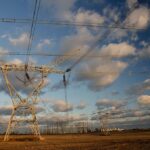Energy News Beat
The following commentary was written by Carrie Zalewski, former Chair of the Illinois Commerce Commission and currently vice president of markets and transmission at the American Clean Power Association; and Brent Bailey, former Mississippi Public Service Commissioner and current vice president of operations at Efficient Power & Light LLC. See our commentary guidelines for more information.
Building the power grid of the future requires deploying every available tool in the present.
When it comes to electricity generation, energy wonks often reference an “all-the-above” strategy, which includes all available power sources — fossil fuels, renewable energy, and storage technologies. But generation is just one part of the reliability and affordability equation.
The Midwestern transmission grid must also evolve and adopt an “all-the-above” mentality to withstand increasingly frequent extreme weather events and support rapidly growing power demand while ensuring reliable and low-cost electricity for consumers. This is no small task. As such, policymakers and grid operators must carefully consider all near-term and long-term solutions.
New high-voltage transmission lines are essential to ensure the grid of the future is prepared for surging load growth. But new transmission line development and construction can take many years. To address immediate needs, there are other solutions that can improve capacity in the near term. Enter: advanced grid technologies.
Significant technological advancements are available now that can come online in one to three years compared to the decade or so it takes to build new transmission lines. Such advancements include: grid-enhancing technologies (GETs) — hardware and/or software that can increase the capacity and efficiency of existing transmission lines most hours of the year — as well as high-performance conductors (HPCs) — which offer greater capacity and efficiency benefits compared to traditional conductors.
While these advanced grid technologies cannot provide enough capacity to meet long-term system needs, they are relatively inexpensive and drive enormous cost savings until we can bring regional backbone lines into service. Deploying GETs and HPCs in the near term to help meet projected demand growth while simultaneously planning and constructing new regional and interregional transmission lines is key to ensuring the delivery of reliable, low-cost power across the Midwest.
MISO, the central U.S. grid operator, is considering a second portfolio of transmission projects aimed at creating a regional backbone of long-distance lines that will enable power to flow across the Upper and Central Midwest. These transmission lines will build upon investments made in the first tranche of projects, approved by the grid operator in 2022, which began to lay the groundwork for an evolution of the system.
The second batch of potential projects aims to “reliably and efficiently enable MISO member goals and load growth,” delivering benefits that significantly outweigh costs. Across much of the current system, MISO found that at least 10% of facilities are overloaded and annual curtailments exceed 15%, meaning available generators are forced offline because there is not enough grid capacity to carry their power.
MISO will also soon consider transmission projects for the Southern region of MISO as well as measures to increase the flow of electricity between the MISO regions. A regional problem requires regional solutions, including well-vetted, long-distance transmission lines.
Additionally, there is a significant need for greater interregional transmission capacity between MISO and its neighbors. The U.S. Department of Energy identified especially high congestion between the Midwest and Plains states. This means there are bottlenecks in the system that hinder the ability to deliver electricity between these areas. As a result, more interregional transmission ties from MISO to the Plains would offer considerable consumer benefits in the form of increased reliability and decreased costs when affordable clean energy can be accessed and transmitted back to MISO members.
Building the grid of the future will require every technology at our disposal. It’s critical that grid operators and state regulators consider and implement all transmission technology tools when planning and building a system that will enhance national security, facilitate regional economic development, and withstand new and growing reliability threats for generations to come.
We give you energy news and help invest in energy projects too, click here to learn more
Crude Oil, LNG, Jet Fuel price quote
ENB Top News
ENB
Energy Dashboard
ENB Podcast
ENB Substack
The post Commentary: To keep the lights on, the Midwest needs an ‘all of the above’ power grid appeared first on Energy News Beat.









